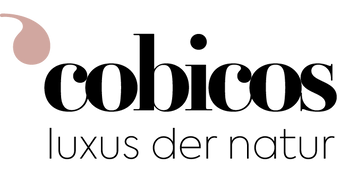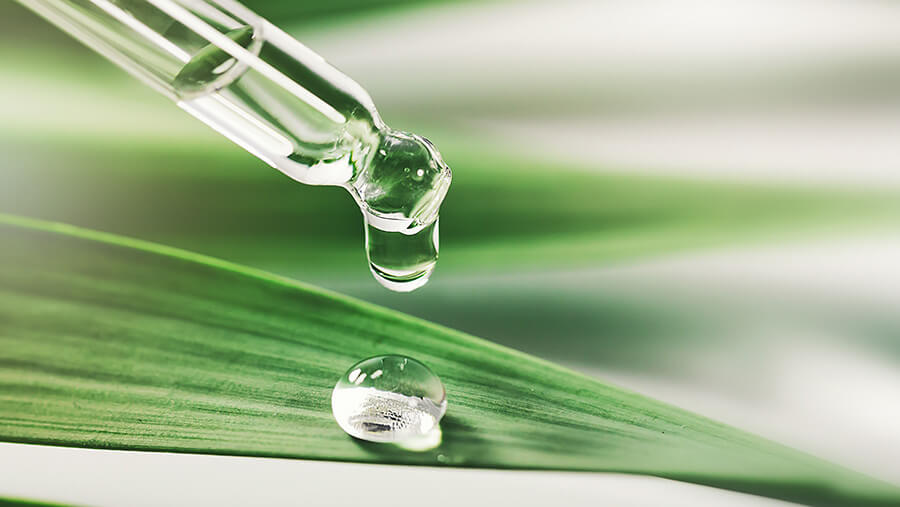What is hidden behind the magic word "pure beauty"? Clean Beauty - Cosmetics that are environmentally friendly, natural, vegan, not tested on animals, organic, sustainable and much more. Where does the term come from? What does the term mean? We'll get to the bottom of it.
Simply translated, Clean Beauty means “clean or pure beauty”. Hence the direct connection to everything that is understood by natural cosmetics. Clean - clean, clear, pure, good to make and use, as well as sustainable and ethical.
But which cosmetic products are those that are being hyped by Generation Z on social media worldwide and, alongside climate and environmental protection, are a heavily discussed and at the same time little well-founded topic? How does the consumer recognize this? What raw materials does it contain? Who is it suitable for? Are there certificates or guidelines?
To answer the questions, let's go back into the past and look at the development of the cosmetics industry: the first care cosmetics were still very original and pure, i.e. "clean" in the real sense, such as milk for a bath, honey for Care, crushed and chewed plant leaves.
Over time, the use of plants became more complex: extracts, tinctures, spagyric extracts, hydrosols were created. Herbs were mixed, ground, mixed with oils and butters to form a paste. In many cultures, care was more of a medical act than beautifying and improving the condition of the skin. For many years there were creams that were rather unpleasant to apply and smelled. They didn't really correspond to what we mean by a cosmetic product today.
The breakthrough came with the discovery of the first emulsifier Eucerit
Using Eucerit, which was obtained from sheep's wool fat. water-in-oil emulsions could now be produced and nothing stood in the way of formulating a wide variety of creams.
Due to the developments in the chemical sector, the cosmetics industry had more and more raw materials available that could do more and more. Fragrances and complexly developed substances were put together from individual chemical elements in order to be able to constantly set new highlights for the demands on texture, fragrance and effect. Things were bubbling in the chemical laboratories and hundreds and thousands of active ingredients were created. Yellow, pink, white and light blue creams came onto the market with new promises of effectiveness.
A change began in Germany with the pioneers of natural cosmetics, who found their way back to the origins of natural cosmetics.
Companies like Dr. Hauschka, Weleda, Lavera, Living Nature and a few others rely on natural plant extracts, butters and seed oils. The skin was considered a living organ and the use of synthetic fabrics was questioned. With increasing allergic reactions to parabens, synthetic fragrances, with increasing rejection of mineral oil, softeners and silicones and increased environmental awareness, the first step towards natural cosmetics was taken.
The term natural cosmetics quickly became very popular; a new trend was born and the way back to nature became a major selling point. At the same time, it was becoming increasingly difficult for consumers to differentiate between genuine and so-called natural cosmetics. Against this background, labels for certified natural cosmetics were developed from 2010, such as the BDIH, cosmos, Natrue, Ecocert labels. The statutes and claims behind the labels can be read on the relevant websites.
Back to the question of what is clean beauty?
There is no concrete definition because it is a modern neologism. There are no specifications or guidelines as to what exactly may be contained in clean beauty products, how and where it is produced and how the packaging should be designed. Therefore, it is used inflationary for many products. On the one hand, we find here the brands whose philosophy adheres to the guidelines of certified natural cosmetics and pays attention to additional aspects such as sustainable packaging, social projects in the extraction of raw materials or production or offer very innovative concepts for packaging.
But we also like brands that emphasize a few positive aspects of their care products, be it the use of plant-based raw materials or sustainable packaging, but are not certified natural cosmetics purely in terms of the ingredients.
Clean beauty products do exist in an original, pure form. You can go very different ways. Some brands rely on simple recipes and often get by with very few ingredients; the products are therefore not necessarily suitable for all areas of application or customers do not find all solid textures.
Solid shampoos are becoming more and more popular
In the form of soaps that foam really well and do not require any plastic packaging. But here too there are big differences in the ingredients, whether it is natural or synthetic soaps. Water-free lip balms such as Living Nature lip balm or Liphydrator, deodorants to spread in jars or winter creams based on waxes and fats can be found here.
Other manufacturers develop more complex formulations with many active ingredients in order to be able to offer products in terms of texture, fragrance and care result for the discerning buyer. This is possible because countless highly active plant ingredients are available in certified natural cosmetics: hydrolates and fine emulsifiers that make textures soft and light and alternative preservatives that make the products last longer.
The two serums Protecting and Lifting from cobicos contain 100% active ingredients in the field of protection and anti-aging and are cosmos certified.
In any case, “clean beauty” has an enormous appeal – meanwhile to different age groups. It was the rather younger cosmetics fans who started, who are already addressing issues such as environmental protection and climate change. They flood social media with their discoveries in the cosmetics industry or homemade products. The most used terms here are vegan, without packaging and not tested on animals *. But the term has now arrived in almost all age groups and is discussed and hyped in magazines and online portals.
But all reports have one thing in common: clean beauty is a new term that can stand for many things but has no clear demarcation!


Leave a comment